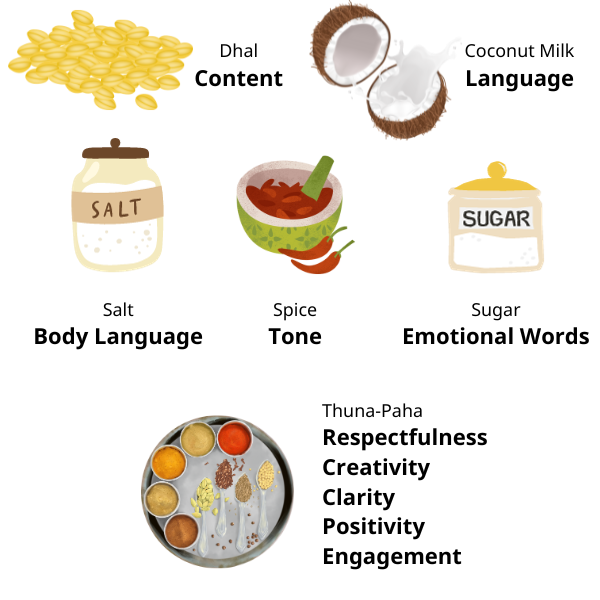The Purpose of Communication
Before delving into the recipe for successful communication, let's explore the fundamental purpose of communication itself. Every act of communication carries with it an implicit expectation, even when speaking to a seemingly unresponsive wall– the expectation of being understood, respected, and perhaps even inspired. Effective communication hinges on our ability to recognize this expectation and elicit the desired response from our audience by providing the right stimulus.
Identifying the Desired Response
Consider this scenario: you're pitching a business idea to an investor. What's your ultimate goal? It's not merely to deliver information but to elicit a response, in this case, the investor's interest and willingness to invest. To achieve this, you must provide the correct stimulus, which is where the art of communication comes into play. Speaking and writing are the primary tools we use to provide that stimulus, while skills like reading, listening, and observing enable us to discern the specific stimulus needed to achieve the desired result. For example, again, imagine you're pitching a business idea to a group of potential investors. Each investor has unique expectations and personality traits, and the environment in which the communication takes place can vary significantly. Some investors prefer a detailed, data-driven approach, while others respond better to a more visionary and big-picture pitch. By reading background information, actively listening, and observing their reactions during the presentation, you can tailor your communication to align with their specific preferences. This adaptability ensures you provide the correct stimulus, increasing the chances of securing their investment and trust in your business venture.
Ingredients for Effective Communication
Now, let's draw a parallel to cooking, specifically making a dhal curry. In this analogy, the dhal and coconut milk represent the foundational content of your message. You can liken the dhal to the content you want to convey and the coconut milk to the language through which you express that content. However, just as a dhal curry needs flavour, so does your communication. Emotions, like sugar, spice and salt, enhance the experience and can be embedded in the content we deliver.
Be aware of Mehrabian Myth
You can read more about Mehrabian Myth in the following article. STILL Believing Communication is 7% words, 38% tone of voice, 55% body language?
Adding Emotion Through Words (7%): Much like adding a touch of sugar to a dhal curry to hasten and sweeten it, incorporating emotional or persuasive language into your communication can have a similar effect. Phrases such as "I'm confident," "I assure you," or "This is the best" can convey assurance and enthusiasm when pitching an idea to an investor.
Crafting the Right Tone (38%): Your tone is the spice that can elevate your message to the next level, contributing 38% of the emotional impact. When addressing an investor, varying your vocal tone can emphasise crucial points or convey calm and collected confidence, depending on your desired perception.
The Importance of Body Language and Appearance (55%): Think of body language and appearance as the salt of your communication recipe, responsible for a significant 55% emotional impact. Gestures, eye contact, and even your attire play a crucial role in how your message is received. Your appearance and gestures matter in the business world.
Appearance Does Matter
The following link is about a social experiment conducted to understand the effect of appearance. Would you stop if you saw this little girl on the street? | UNICEF
Don't Forget "Thuna-Paha"
Now, you might wonder if we've overlooked something important, just as you wouldn't forget the essential "thuna-paha" when making a dhal curry. In communication, "thuna-paha" represents five vital ingredients: respectfulness, creativity, unambiguity, positivity, and engagement. These elements are the secret spices that enrich your message and make it truly memorable.
Ingredients: Dhal Curry to Effective Communication

Cooking Instructions for Effective Communication
Just as dhal and coconut milk serve as the foundational content of a dhal curry, the content of your message is the bedrock of effective communication. However, it's not enough to have the ingredients; you must prepare them correctly. In the world of communication, we have a guiding principle, our "GPPSSS," which is akin to a GPS for ensuring that your message reaches its destination effectively.
GPPSSS Analogy Credits
GPPSSS was introduced to me in a lecture by Mr Jithendra Gunatilake at the Postgraduate Institute of Management, Sri Lanka.
GPS for Sound Content: "GPPSSS"
Grammar (G): Grammar is the first point on our "GPPSSS" navigation system. Just as a GPS helps you navigate by ensuring you're on the right path, proper grammar ensures your message is structured correctly. It provides the framework for your content, making it easy to understand and follow.
Punctuation (P): Punctuation acts like the road signs and signals on your journey. Just as a GPS relies on clear indicators, proper punctuation guides your audience through your message, indicating pauses, emphasis, and the structure of your thoughts.
Pronunciation (P): Think of pronunciation as your GPS's clear and audible voice instructions. When speaking, enunciate words clearly and correctly. Ensure that your audience can follow your verbal directions without any confusion.
Spelling (S): In our GPS analogy, spelling corresponds to accurate mapping. Just as a GPS requires accurate maps, correct spelling ensures your message is free from errors that could derail your communication.
Style (S): Style is like choosing the correct route on your GPS. It involves making deliberate choices about how you present your message. Your style should align with your audience and purpose, whether formal, informal, persuasive, or informative.
Selection of Words (S): The choice of words is similar to selecting destinations on your GPS. Just as you choose specific locations to reach, your word selection should be purposeful, tailored to your audience, and convey your message effectively.
So, just as you wouldn't attempt to prepare dhal curry without the right ingredients and proper cooking techniques, effective communication relies on your "GPPSSS" GPS for sound content. By following these guidelines, you'll ensure that your foundational content is present and prepared to perfection, leading your message to its destination successfully.
In conclusion, effective communication is akin to preparing a dish like dhal curry. Mastering the art requires careful attention to the foundational content, sweetening it through emotional words, spicing it up with tone, and seasoning it with body language and appearance. Don't forget the secret spices – respectfulness, creativity, unambiguity, positivity, and engagement – that can turn an ordinary message into an unforgettable. With this recipe in hand, you'll be well-prepared to serve up successful communication in the business world.
Serve Your Dish
